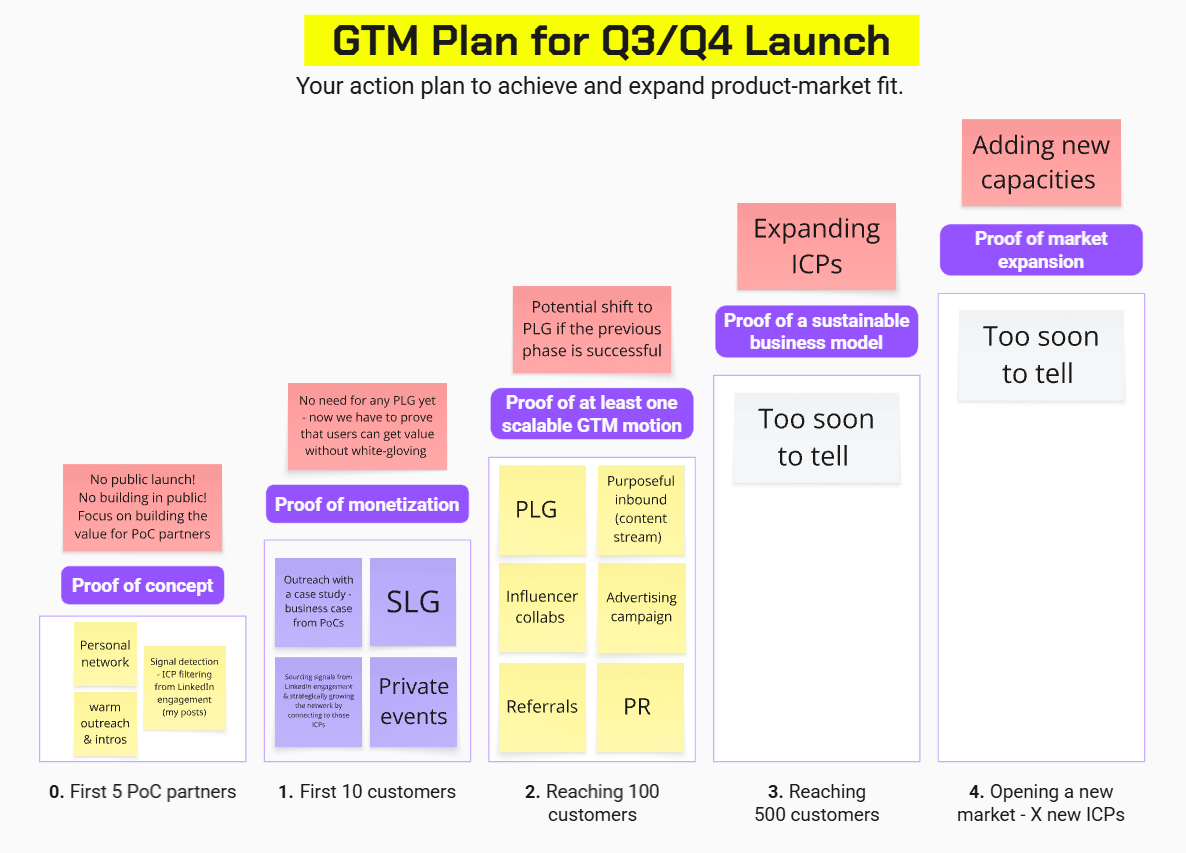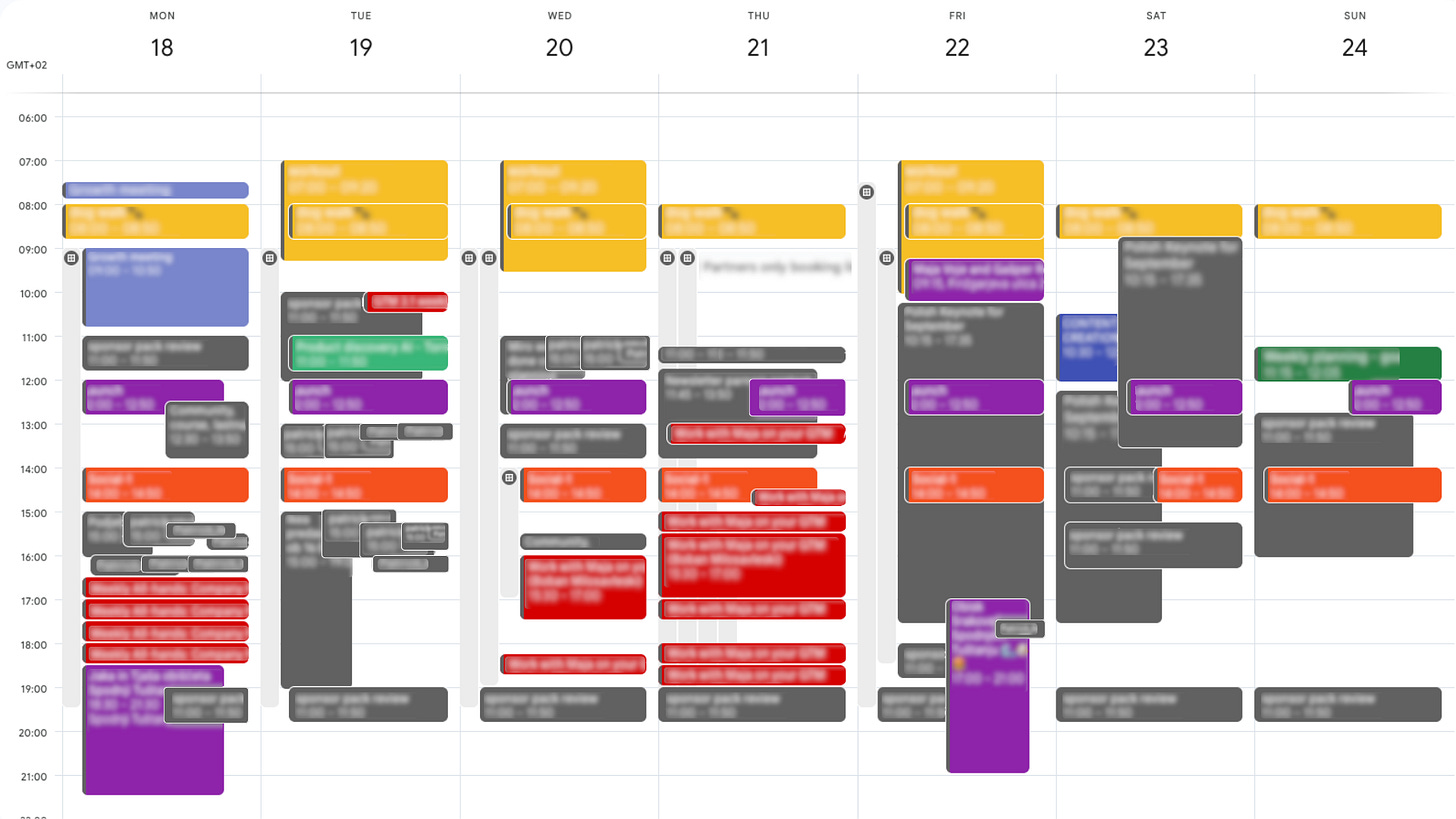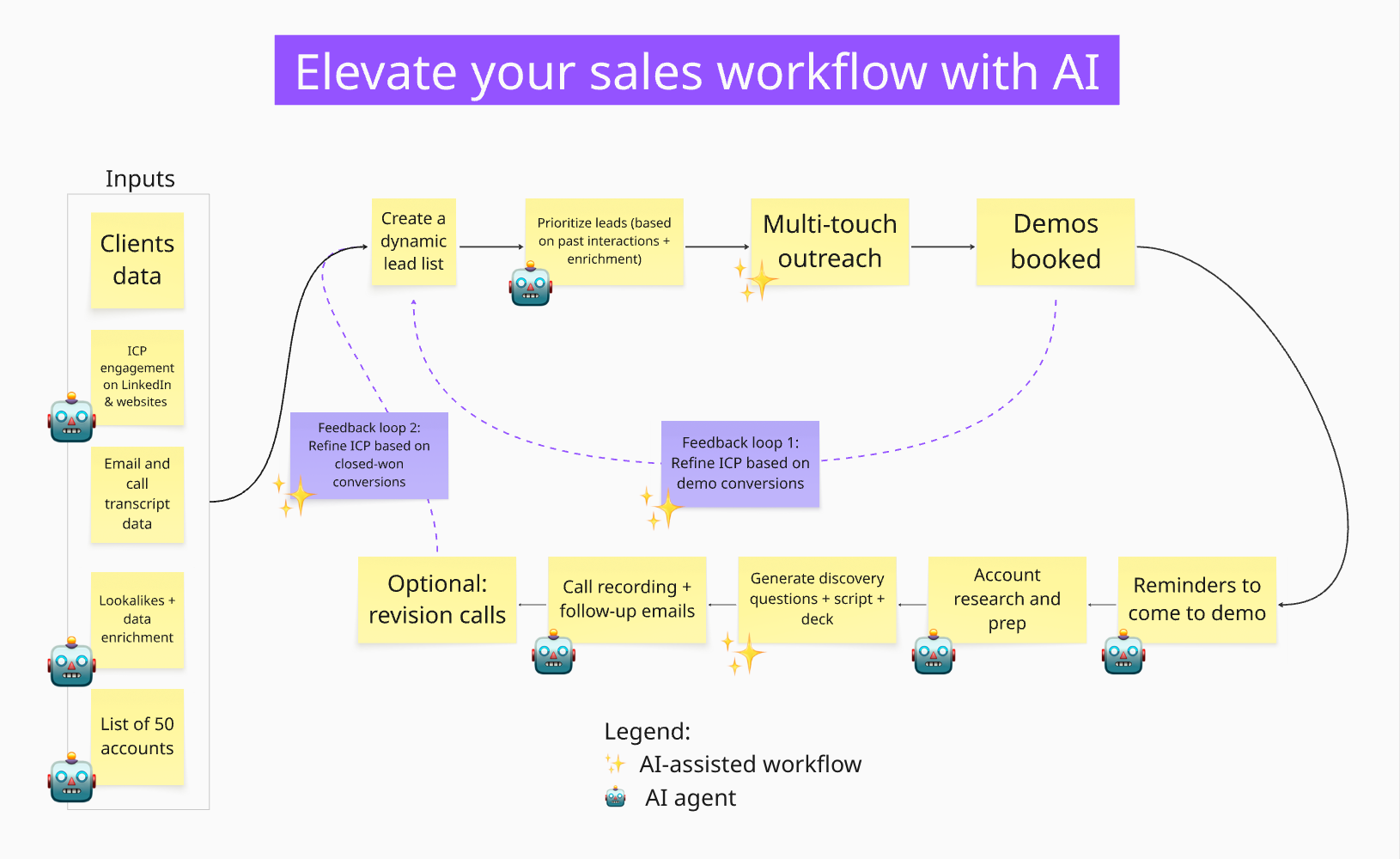The AI Playbook for Scaling Founder-Led Sales
Workflows, tools, and AI systems to turn your sales into a repeatable growth engine
Dear GTM Strategist,
I’ve never told you this, but since January, I have been working on my first AI product.
Well … working … 😅
Hired excellent AI Product management consultants to ideate and come together with a solid value prop. I didn’t want to develop a ChatGPT wrapper - I wanted to understand the agentic workflows and how this technology can enhance our work.
Failed to validate the first productisation of the idea because the product was “fun to explore”, but retention has been a pain in the arse (read: significant churn).
Turned down an investment that a VC offered before I ever built a product because it just did not feel right. 🤷
Put everything on pause from February to May because there was so much going on in other business units that I really had to be there.
And finally got seriously into it in May, finishing the alpha version this week and getting ready to execute my go-to-market strategy for it.
I cannot tell you much more about the product at this point, but I can share my thoughts on its GTM.
This newsletter is sponsored by Clarify.
Clarify is the autonomous CRM for founders and early-stage sellers. Build pipeline, close more deals, and cut the CRM busywork.
Set up in minutes and get a living, breathing CRM with a built-in call recorder — free to start.
Why I will go Sales-led first
Many experts say that first you should be optimizing for learning - and it sounds awesome. I want to ensure that the insights come from people who are actually in the market for these solutions, not from random individuals on the internet outside my ICP bucket.
While other stakeholders want to do a big launch from the get-go, I am like - hell no.
I spent a year and a half working almost exclusively with AI companies and tested hundreds of tools myself.
I’ve seen so many awesome demos that lead to non-working products, bad outputs by the systems, problems with client service and success and just poorly made products that glitch and hallucinate.
Not on my watch.
If you cannot control value delivery to 5 customers, how do you expect to serve 500 or 5000 customers well? Beats my imagination.
It's an AI product, not a slot machine.
Here is my exact plan for how we’ll get this venture up and running:
Now: Alpha testing involves sending Jira tickets and video feedback to devs, acknowledging that the only way to differentiate an AI product sustainably is through proprietary data, a well-integrated product within workflows, and powerful feedback loops.
Two weeks from now: Beta with 5 friendly companies that will be co-creating the product. They will come from my personal network - invite only. I need these awesome people on Slack telling me daily what is wrong so we can fix it.
In one month, I will invite 30-50 carefully curated companies to the product and provide them with white-glove service. We’ll have weekly success calls, and I will personally make sure that they are getting great value from the product. This will be a sales-led motion - aka account-based sales. No public launch - no dreaming about product-led growth and virality before we get our first 3-10 customer case studies that will make both parties. They will get a “launch deal” - I am already working on that “irresistible offer”.
And then, only then, in October or November, we will decide if the product is ready for self-onboarding and if product-led motion is something that makes sense for us.
OK - sounds good as a plan.
But important question:
Who will do all this work?
I am looking around and all I see is me…
and my packed schedule.
But no panic, I am totally sold on the idea that AI can help me get things under control, like it did for my inbound GTM motion.
Still, the extra workload will be considerable, as I will have to do those demos while running a business, building a product, managing a team, making sure that customers are happy, creating content, and some personal stuff 😀
How can I make it work?
Charlie Munger to the rescue:
Inverse thinking: What would a BUSINESS DISASTER look like in my venture?
Now do the opposite, and I should be OK.
Starting with the DON’T WANT THIS list
When I am thinking about how to shape this business process and what technologies and tools to use to support it, I do not start with the feature requirements list.
I started with the WILL NOT DO THIS list.
These are some bad practices that I’ve seen other businesses do. I want to avoid them in my new business venture:
Founders in my network often ask me:
When is the founder-led sales over?
Maybe when you have a go-to-market fit - one predictable and scalable GTM motion - but probably never.
Thinking about how to sell our product, making sure that customers get good value and collecting intelligence on what would make them happy in the future, and what business opportunities we should pursue next are core functions that we should be doing as founders.
And even 5 years into a successful business, some prospects will still want to “talk to the founder” … so yeah, let’s get used to showing up for those sales calls.
Now that I understand what my no-nos are, I can start crafting my sales process more intelligently.
I started by drafting a workflow first before ever thinking about tools.
Think workflows first - then tools, AI and agents
Rule #1: Tools should support the workflows, not vice versa.
I will not adjust my workflows to what a certain tool wants me to do.
I want to support workflows that work well for me with tools:
A v01 workflow and opportunities to enhance it with AI look like this:
You can see that I used two different emojis ✨ (AI-assisted workflow) and 🤖 (potential for an AI agent). The difference: Agents can make decisions and perform actions autonomously; workflows automate the exact steps that you define. They can be agentic or not. For now, let’s agree on “agents perform actions”, agentic workflow automates pre-defined tasks.
In reality, it is way more meticulous, but I wanted to simplify them a bit so you can easily grasp that I am typically searching for two things when implementing AI:
What tasks are a no-brainer to automate (reduce manual work, run in the background without me having to think about it) and where do I really see what people call agentic AI.
Where AI and its feedback loops could self-learn and help me do my job better than I ever could with my human capacity.
As a human seller, I can add most value if I am there on the demos, actively listening to people, sharing the enthusiasm for the product, and building relationships with people. These are the things that AI will not change (for now).
My work has much lower contribution and high opportunity costs if I spend my days manually searching for leads, thinking about what the action points are for the meetings, so that I can send the follow-up email, etc.
What next …
Only when I understand the workflows can I start thinking about the tools and the build/buy dilemma that always comes up.
Here's what I am thinking before heading to a business development mission in late August and September.
Systems I’d automate before hiring my first rep
AI is redefining customer journeys, preferred interfaces, and interaction methods. All sellers that I know use these types of tools, and I do not have to reinvent the wheel here with AI - I can just buy-in the category.
Here is what I should be looking at:
I love tools, but they can quickly become massively expensive.
I also want to avoid overspending before validation, especially since this new business venture is bootstrapped (for now).
So, I stitch together an MVP sales setup of those tools to support my workflows without breaking the bank.
Let’s start with up to $200/month budget:
ChatGPT Plus (no-brainer): $20
A general tool for agents building, so I can MVP my intent signal and AI SDR category for now (e.g. Relay.app): $20-$50
Clarify CRM: $20
Google Workspace Standard (includes Google Meet for calls & scheduling): $14
Sender tool (email, LinkedIn): $50-$80
At the moment, I am testing Clarify as a CRM for this venture because I am bullish on their AI-first philosophy, and it comes with a powerful call recorder and behind-the-scenes data enrichment, which saves me from paying for 2 other tools (call recorder + enrichment tool) on my shoestring budget.
Here is a demo of my current Clarify setup made with their free version. The setup was seamless - I just connected the calendar, email, and forgot about it till it prepared some insights for me. Now, It’s a living, breathing CRM and I am killing off tasks agreed upon at meetings and reviewing deals suggested by AI from the calls. The admin runs in the background, allowing me to focus on what I do best: talking to people. They call it an “autonomous CRM” and I can see why.
Now, your turn:
How does your sales process look, and where do you see most room for improvement?
Hope this workflow will help you find some new ideas & let me know in the comments if you want me to do this on a larger stack in September for much bigger orgs than my guerrilla-style founder-led sales operation.
Already testing a $14K tool setup for a client, and I will eagerly report back soon.
Let’s supercharge ourselves with AI ✌️
Love,
Maja
📘 New to GTM? Learn fundamentals. Get my best-selling GTM Strategist book that helped 9,500+ companies to go to market with confidence - frameworks and online course included.
✅ Need ready-to-use GTM assets and AI prompts? Get the 100-Step GTM Checklist with proven website templates, sales decks, landing pages, outbound sequences, LinkedIn post frameworks, email sequences, and 20+ workshops you can immediately run with your team.
🏅 Are you in charge of GTM and responsible for leading others? Grab the GTM Masterclass (6 hours of training, end-to-end GTM explained on examples, guided workshops) to get your team up and running in no time.
🤝 Want to work together? ⏩ Check out the options and let me know how we can join forces.










Insightful as always ; ) May I ask the reason
you picked relay.app and not n8n? If any
This is a sharp breakdown. Founder-led sales works best when it’s treated as an iterative playbook, not a one-time sprint. AI doesn’t replace founder-led selling, it accelerates the feedback loop so you can move from “what works for me” to “what scales for my team.”
I’ve been writing on how technical founders can use curiosity and problem-first conversations to drive sales momentum, it pairs well with this idea. Here’s one of my takes: Stay Curiosity
https://open.substack.com/pub/engsales/p/stay-curious?utm_campaign=post&utm_medium=web